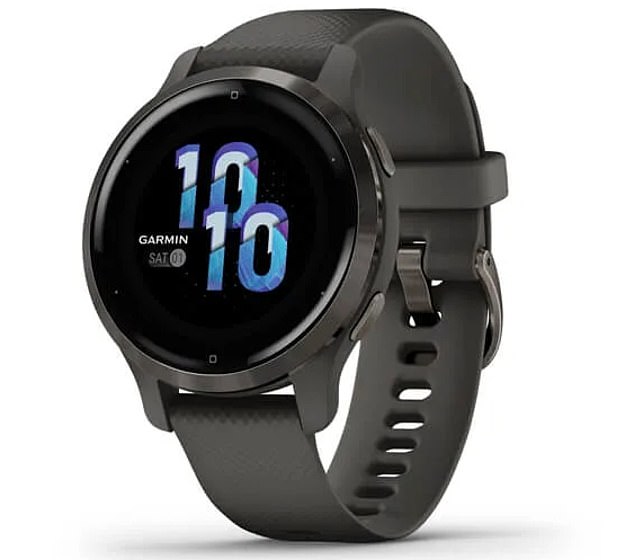Nine in ten Black Friday deals are cheaper or the same price at other times of the year, shock research shows
With Christmas just a month away, many people are hoping to score a bargain during the Black Friday sale.
However, a new study shows that consumers may not be getting the deal they were promised.
Which one? has revealed that nine out of 10 Black Friday ‘deals’ are actually cheaper or the same price at other times of the year.
The consumer champion says retailers are using ‘underhanded’ tactics to magnify the apparent size of the cuts.
Of the 224 products from eight of the largest tech and home retailers, 60 percent had been at their original price for less than six months in the run-up to Black Friday.
Shocking: which one? discovered 14 examples where the product had never been sold at a higher price in the past 12 months.
For example, Boots offered a Remington Shea Soft Hair Dryer for £18.99 on Black Friday, claiming this was a whopping 62 per cent discount from £49.99.
But in reality: which one? says Boots has never sold the hairdryer for £49.99 in the last year – meaning the savings weren’t nearly as great as they seemed.
Which one? warns that 90 percent of Black Friday deals are available for the same price or cheaper outside the two weeks of Black Friday (stock image)

Boots was offering a Remington Shea Soft Hair Dryer for £18.99 on Black Friday, claiming it was a whopping 62 per cent discount from £49.99. But in reality: Which one? says Boots never sold the hairdryer for £49.99 in the last year – meaning the savings weren’t nearly as great as they seemed
As the Black Friday sale has grown to include a fortnight of offers and discounts, it has become an increasingly important time for Christmas shopping.
Last year, shoppers spent a whopping £13.3 billion ($16.74 billion) between November 20 and December 1.
However, which one? has warned that Black Friday deals are not always what they appear to be.
For the first time: which one? found that none of the deals we surveyed were cheaper on Black Friday itself than at other times of the year.
Although the discounts seem large, the problem is that products are not always sold at the ‘wash’ price at which the discounts are calculated.
For example, which one? found that John Lewis sold a Garmin Venu 2S smartwatch for £294 during the two-week sales period, with a claimed saving of £90 instead of £384.
However, in the last year the watch never actually sold for £384.
In fact, the most John Lewis had ever sold the product for in the last twelve months was £349.99 – and this price did not return after Black Friday.

John Lewis sold a Garmin Venu 2S smartwatch (pictured) for £294 (£370) during the two-week sale period, with a claimed saving of £90 (£113) from £384 ($483). But the watch had not sold for £384 at any time last year
Some products that seemed like great deals were actually available at better prices in the months leading up to Black Friday than during the big sale itself.
For example at John Lewis, Which? says the Sage Nespresso Creatista Pro coffee machine has been heavily discounted to £499.95, down from £699.95.
In reality, the coffee machine was available cheaper than this retail price for 32 days in the six months leading up to Black Friday.
The same machine could be purchased four months before the start of sales for a price of just £479.95.
A John Lewis spokesperson said: ‘In a highly competitive and dynamic market, our customers can find great deals with us all year round.’
In another case, Boots was selling the ORAL-B iO4 electric toothbrush for £89, with a seemingly incredible discount of £240.
But according to Which?’s analysis this product was sold for £240 on just one day in the last twelve months.
Other than that day, the highest price Boots ever sold for the toothbrush was £95, meaning you’d save £14 instead of £151.

At John Lewis, which one? says the Sage Nespresso Creatista Pro coffee machine was heavily discounted to £499.95, down from £699.95. In reality, the coffee machine was available cheaper than this retail price for 32 days in the six months leading up to Black Friday.
A Boots spokesperson said: ‘Being part of that (Black Friday) promotional program does not preclude these lines from being offered at other times of the year.
‘Which one? reviewed a very small number of our Black Friday deals from last year and in all cases the items were at a lower price during the promotion or when the price matched the competition.’
While which one? says there are some real deals to be had during the Black Friday period, but customers should be careful not to be blinded by a seemingly big discount.
The simple fact that a product is labeled ’60 percent off’ does not mean you are saving 60 percent of what you would have otherwise paid.
Harry Rose, editor of Which? Magazine says: ‘Our research reminds shoppers not to feel pressured to overspend on Black Friday purchases, as these deals are usually repeated – or even beaten – at other times of the year.”
For customers who want to be sure they’re getting a good deal: which one? recommends using a price tracker website such as PriceRunner or CamelCamelCamel.
These services allow you to compare a product’s price history to ensure the deal is as good as it seems.
Likewise, checking the price at multiple retailers can help you figure out whether it’s really worth jumping on that Black Friday bargain.

Which one? recommends using the price tracker site CamelCamelCamel (pictured) to view the price history of your products before making a purchase
Which one? calls on retailers to ‘improve their pricing policies’ by only mentioning savings compared to the most recent previous price.
For temporary offers, which ones? wants the offer to be valid for a shorter period than the higher price was available.
In addition, the retailer must publish the date the higher price was applied and demonstrate that it is representative of its price history.
Mr Rose added: ‘We want retailers to abandon sneaky pricing tactics so that consumers are not misled about the deals on offer.’
